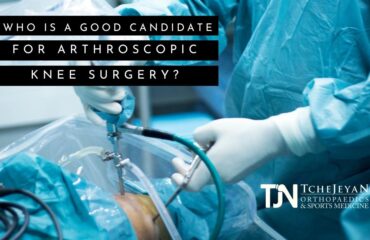Your ACL, or anterior cruciate ligament, is one of the main ligaments in your knee joint. A ligament is a strong, fibrous tissue that connects one bone to another bone to stabilize a joint. There are two primary ligaments in your knee, the ACL and the PCL, or posterior cruciate ligament. ACL injuries usually happen suddenly. They are a common sports injury caused by landing improperly from jumping, from sudden directional changes that twist the joint, or from being hit by extreme force. However, you don’t have to be an athlete to sustain an ACL sprain or tear; they also happen to people undertaking normal daily activities.
There are two primary types of ACL injuries: tears and sprains. Both can cause similar symptoms, including swelling, inflammation, pain, loss of mobility, tenderness, and the inability to bear weight on the affected leg. However, while they may feel similar, there is a difference between them. If you are unsure whether your ACL injury is a tear or a sprain, the best way to confirm the severity of your condition is to schedule an appointment with an orthopedic specialist who can perform a physical exam and x-rays or MRI to help create a treatment plan.
The Degree of Your ACL Injury Will Dictate the Treatment
Sprains and tears are related. A sprain is when you overstretch a ligament but not to the point that it causes dislocation. A bad sprain can involve a small tear, but in most cases, it is only when the ligament has been stretched too far.
ACL injuries are graded on a scale of one to three. Your doctor will determine the grade of injury you have following a physical examination and by using imaging tests such as X-rays or an MRI. The grade of your injury will also determine what treatment is appropriate.
Grade One ACL Injuries
Grade one ACL injuries occur when the ACL has been overstretched but has not sustained any tearing. You can treat this type of injury with at-home care: rest, ice, compression, and elevation. It will require you to significantly cut back on using your knee for anything but the most basic activities. In addition, wearing a brace can help keep the joint correctly aligned and prevent you from making the injury worse.
Grade Two ACL Injuries
Grade two ACL injuries occur when the ligament has stretched too far and also sustained a partial tear. Patients suffering from this type of injury can also employ the at-home treatment methods outlined above. In addition, patients should undertake physical therapy to encourage healing and to strengthen the surrounding muscles to transfer some of the work of stabilizing the knee from the ligaments to the muscles.
Grade Three ACL Injuries
Grade three ACL injuries occur when the ligament has torn so much that it is barely intact or completely torn. Because a torn ACL will not repair itself, the patient will have to undergo ACL reconstructive surgery to restore strength, stability, and mobility to the area.
Treating a Grade Three ACL Tear
A torn ACL affects the knee’s – and therefore your – stability. It can cause chronic pain and joint dysfunction when left untreated. In addition, even for people who do not lead active lifestyles, people with a torn ACL are much more likely to injure their knee further because the joint is significantly weakened. It can also lead to problems in the hips, back, and legs from changing how you move due to compensate for the injury. Accordingly, ACL reconstructive surgery is the best option for patients with a Grade Three ACL tear.
ACL surgery involves removing the torn ACL and replacing it with graft tissue from the patient’s own body or from a donor. The new ligament tissue is then attached to the bones to replace the torn ligament.
This procedure can be performed arthroscopically. A typical ACL surgery takes about 90 minutes, and patients can return home the same day. Post-op, patients will undergo physical therapy to restore their full range of motion and enhance healing. Complete recovery can take anywhere from nine to 12 months.
If you have sustained an ACL sprain or tear and aren’t sure about the degree of your injury, consult orthopedic surgeon Dr. Tchejeyan for an accurate diagnosis. We can create a treatment plan to restore your knee joint’s strength and mobility. Contact us today at Tchejeyan Orthopedics and Sports Medicine to schedule your consultation.




